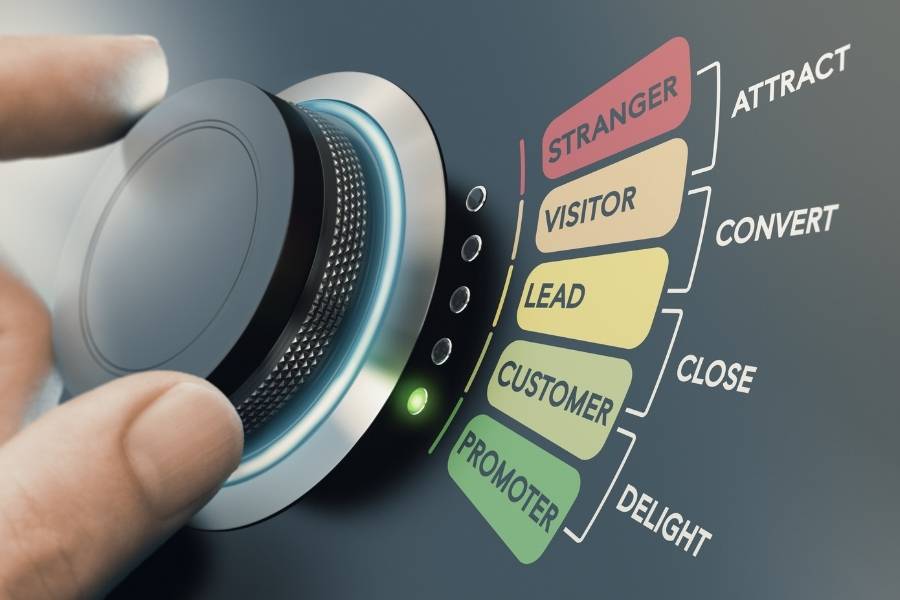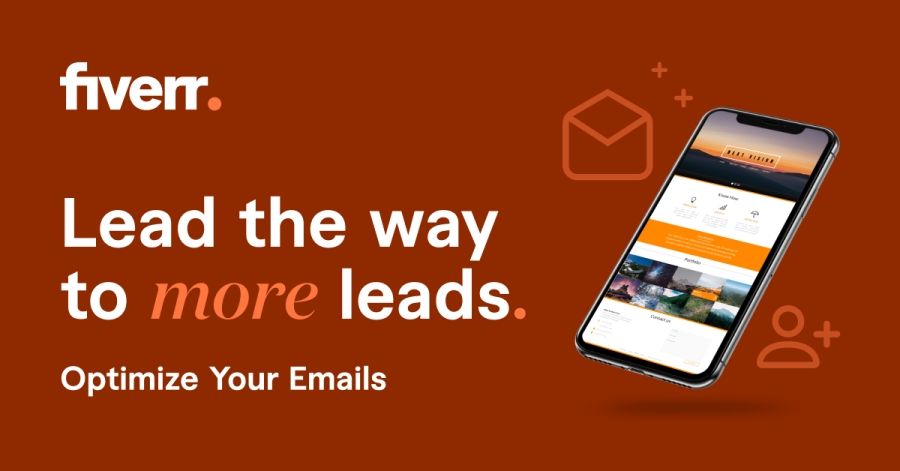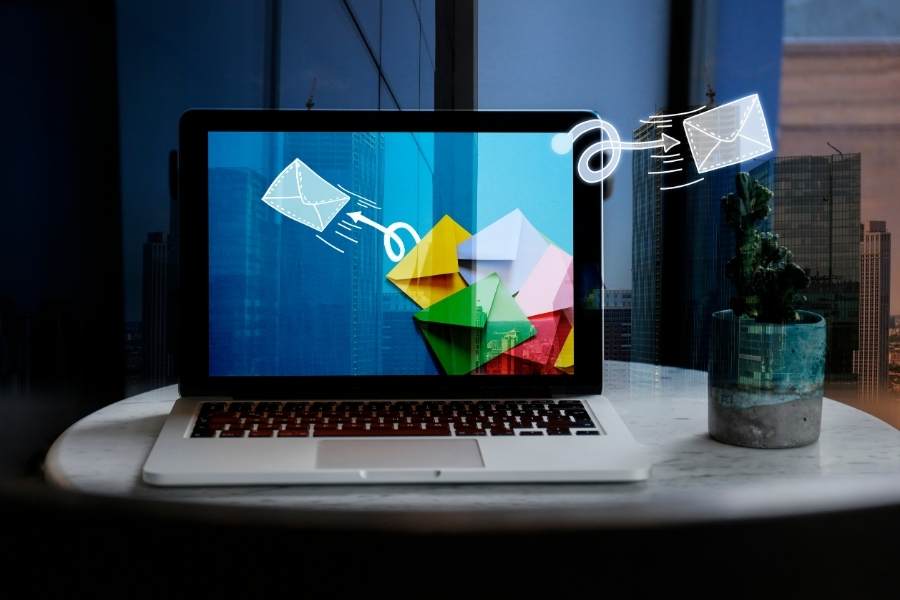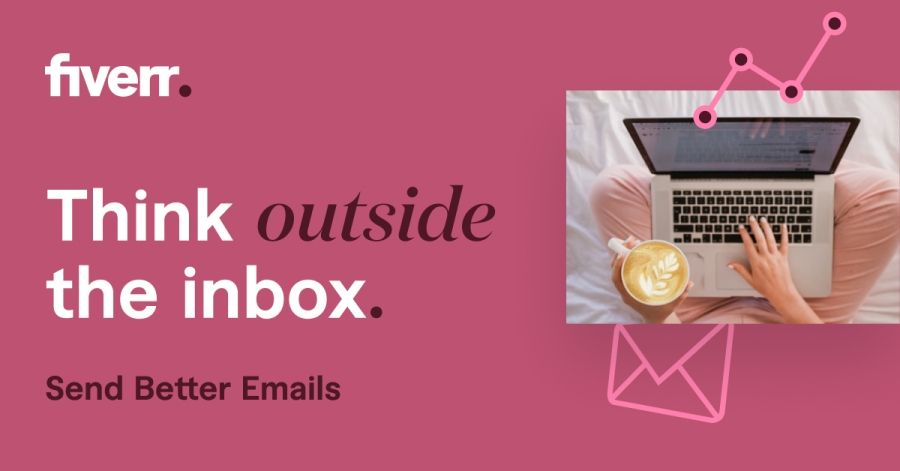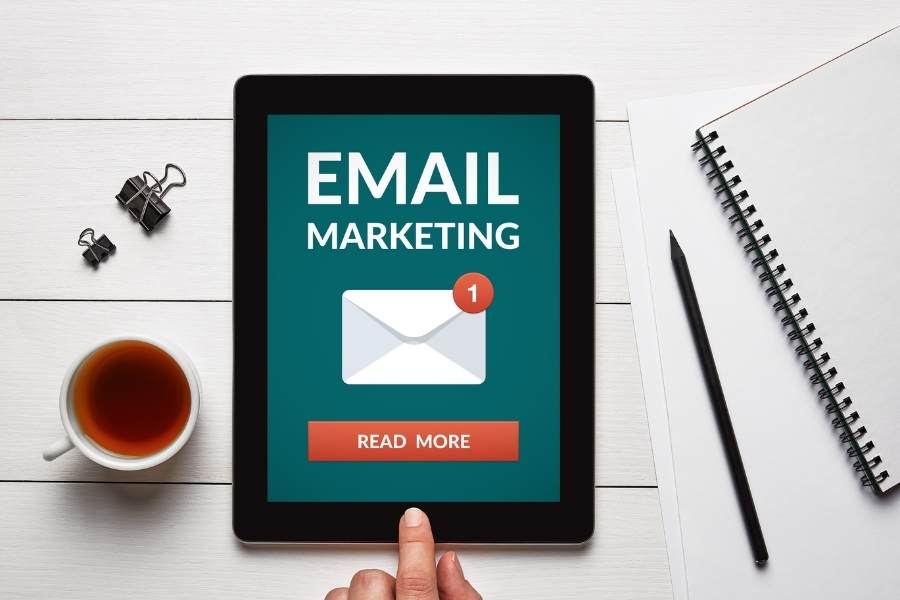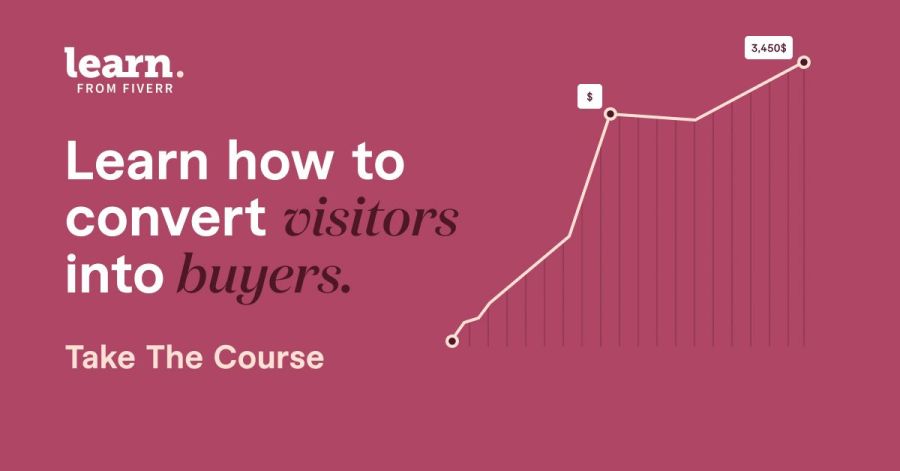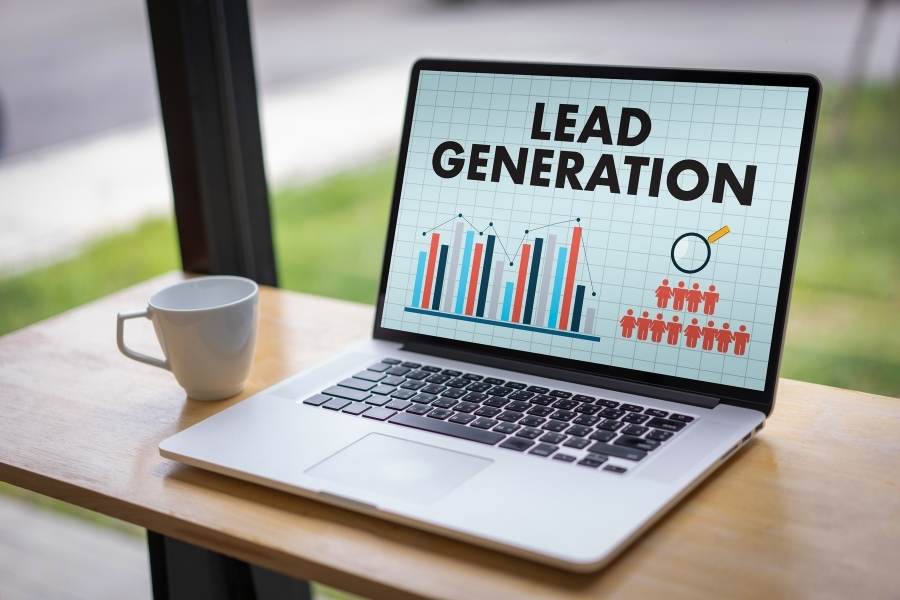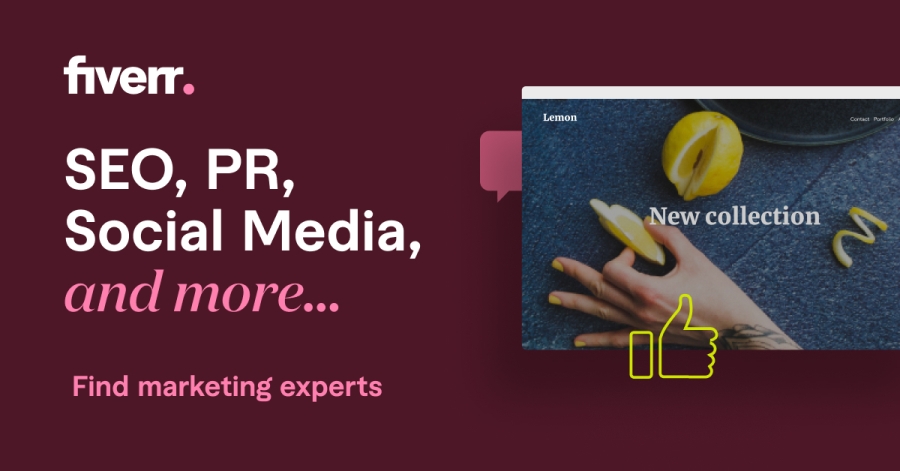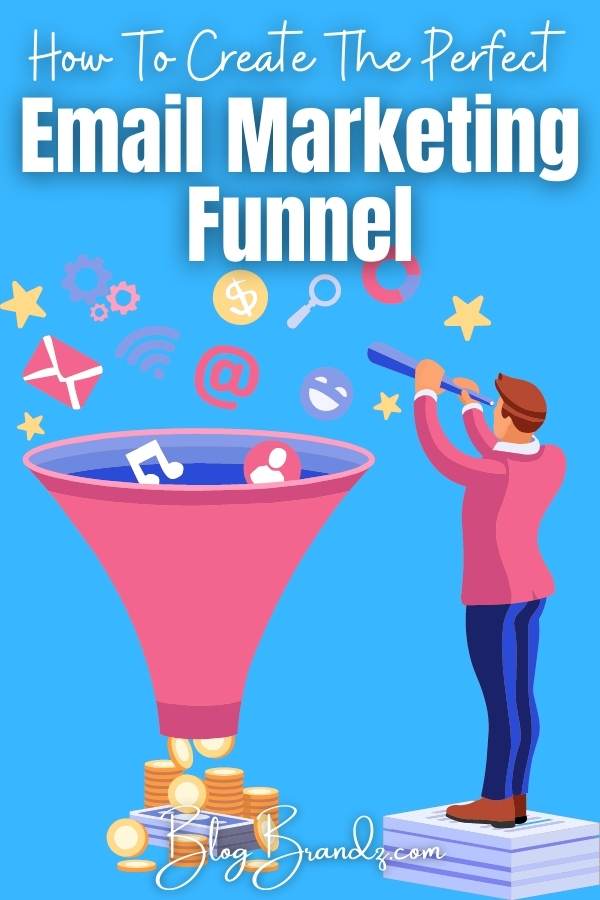What is an email marketing funnel and how do you build one? These email marketing tips will show you how to build an effective email marketing funnel.
The ultimate goal for every business is to sell its services and products. In this article, we’ll focus on just one marketing tactic to help you do that – building an email marketing funnel.
But, why email marketing? Because it’s still one of the most reliable and effective digital marketing strategies.
Is email marketing just about sending emails? No, it’s about much more than that. Creating an effective email marketing campaign requires a strategic plan to capture, influence, and convert leads.
With an effective email marketing campaign, you can influence customers, and increase sales and customer retention.
If you get this right, you could get an ROI of up to 122% according to an eMarketer study. That’s four times higher than any other digital marketing channel.
However, you do need patience and consistency to get results from email marketing. So, how do you create an effective email marketing strategy and use it to create the perfect email marketing funnel?
Contents
What is an email marketing funnel?
An email marketing funnel is a journey that turns a website visitor into a prospect or lead through email marketing.
It requires building systems to capture emails, follow up, and deliver value to your prospects and leads before they finally convert and do business with your brand.
At every step of the email marketing funnel, leads are filtered out. Eventually, you’re left with a cohort of potential customers. This is why it’s called an email marketing funnel.
But, what are the stages through which this process of filtering takes place? Let us walk you through it.
Many experts say that an email marketing funnel is just a four-stage process. But we prefer to think of it as an eight-stage process.
The 8 stages of the email funnel
The various stages of the email marketing funnel are as follows:
#1. Awareness
Stage 1 is where the audience becomes aware of your brand. Once a website visitor subscribes to your email autoresponder or newsletter, they’re expecting something valuable to follow.
This is your chance to show them what you have in store for your customers, showcase your brand values, and let them know how they can benefit from it.
This stage is primarily about creating interest and sparking their curiosity about your brand and products or services.
#2. Engagement
Stage 2 is the most crucial step where you either grab your lead’s attention or cause them to unsubscribe. To successfully navigate this stage, you need to understand the pain points and expectations of your target audience.
Try focusing on how you or your brand can solve their problems so you can increase their interest in your brand and make them more likely to open the emails to learn what solutions you have to offer them.
In this stage, you also need to acquaint them with the type of content and solutions you offer.
#3. Consideration
Once your leads know what you have to offer them, they will start looking for options from your catalog of products and services to help them solve their problems.
Stage 3 is when you will introduce them to your services and products as solutions and try to convert leads into customers.
This is the stage where you answer all their questions and objections and demonstrate to them why the solutions you provide have an edge over those of your competitors.
#4. Purchase
Stage 4 is where your email marketing strategy bears fruit and your lead nurturing efforts lead to a decision by your customer that involves purchasing your products or not.
At this stage, you must send your leads sales emails designed to encourage the transaction that will convert them into customers. You must add a Call-To-Action to every email CTA.
If your customers find products relevant to their problem and like you or your brand, they are more likely to make the purchase.
#5. Adoption
In Stage 5, your job is to keep your customers engaged after their purchase and ensure they stay on board as subscribers so you can sell to them again at a later stage.
At this point, relevant emails can include regular updates about the brand and products, introducing them to product updates and new products, and providing them with additional resources they may find helpful.
This will keep them engaged and encouraged by your ability to show up for them.
#6. Retention
Stage 6 is when you invest your efforts in continuing to delight your customers and convert them into regular website visitors.
You can send them new articles published on your blog and email promotions with exclusive offers. If you don’t want your customers to up and leave at this point, you must put in all your efforts to ensure that they remain engaged.
Make them curious about upcoming developments and send them useful and actionable tips to ensure they stick around for a long time.
#7. Expansion
Stage 7 is when you have to work on expanding your brand. Survey your customers to find out what else they need from you.
Then provide them with the solution either by developing your own products or through joint ventures with other vendors. Implement the changes you need in your business to grow and expand your brand.
8. Advocacy
What’s the use of all these efforts if your brand gains no recognition? Word-of-mouth is the most priceless method to gain brand recognition.
This will help you make more people aware of your brand so you can attract new customers into your email marketing funnel.
Keep in mind that the end goal of all these efforts is to influence your leads and convert them into potential customers.
How to capture leads and build an email list
While your website traffic can come from a multitude of sources, there are two potential ways to capture email leads on your website. These include:
#1. Opt-in forms
When you visit a website that captures leads into an email marketing system or CRM via a pop-up form, you’ll often be asked to enter your name and email address in exchange for some kind of incentive.
These pop-ups are called opt-in forms and they are one of the most efficient ways to capture leads in the form of email subscribers. The best part is that these email forms can be placed anywhere on your site, not just in pop-ups.
Today, many websites use a CTA button instead of a popup. The visitor clicks on the button to trigger a popup with an opt-in form. These triggers are far less intrusive and can also be more effective in capturing leads.
#2. Landing pages
Another very effective way to build an email list is with landing pages. The most effective way to do this is to use a landing page builder to build high-converting landing pages.
With landing pages, you can showcase your product benefits without actually going into detail. You can also use conversion rate optimization (CRO) tools to test and track your landing page elements to boost conversions and sign-ups.
4 ways to create the perfect email marketing funnel
Now that you understand the journey your customers take through your email marketing funnel, you must learn how to create the perfect email marketing funnel.
With the right email marketing strategy and the best email marketing platform or email automation software, you can create your email marketing funnel and safely store your email marketing database.
Here are some of the ways to build the perfect email marketing funnel to help you drive conversions and sales:
#1. Triggered email funnel
A triggered email funnel is the best way to reach out to your leads at the right time. Triggered emails require good email automation software in order to work properly.
With the right email marketing software, you can personalize these triggered email campaigns and send emails automatically to your leads whenever they trigger an action.
A trigger is activated whenever a lead:
- Is added to the list
- Submit the form on your website
- Clicks certain links in the email
- Fills in the opt-in form
These triggers are based on the user action and are sent at the right time and for the right purpose, such as:
- Onboarding of customers
- Following-up with customers
- Webinar campaigns
- Autoresponders sequences
#2. Autoresponder sequence
When your customers interact with your business in any way, your autoresponder system will send them an email automatically depending on the action performed.
These autoresponder messages are sent at various stages of the email marketing funnel with the aim of keeping customers engaged with the brand. These work best in the form of confirmation emails.
For example, if your customers buy a product, a thank-you email is sent to them automatically. Other actions that autoresponder sequences can respond to include:
- Joining a newsletter list
- Filling in a contact form
- Opting in for a lead magnet
- Buying products
#3. Drip campaigns
Another way to design an email marketing funnel is using an email drip campaign. These are a sequence of pre-written emails that are sent on a predefined schedule.
Drip marketing campaigns target subscribers to achieve specific goals and can either be used for brand awareness or for driving sales.
For example, let’s say that John visits your site and subscribes to your email sequence to download a free eBook. You send John the eBook and this activates the drip email marketing campaign.
After a few days, he receives a newsletter as part of the drip email sequence. With regular emails and repeated exposure to your brand and products, it becomes more likely that he will convert from a lead to a customer.
At this point, John becomes a sales-qualified lead. You can find several CRM tools to help you optimize and customize these campaigns.
#4. Behavioral email workflows
Once again, let’s consider what happens when John subscribes to the eBook download sequence. This time, he does not interact with the follow-up emails. So, should you continue sending him emails? No!
In the meantime, another lead called Joe constantly opens your emails and engages with your website. You’ll continue to send Joe the emails. This is how a behavioral email workflow functions.
It will only send emails based on customer activity and interaction. Once you map out the email marketing funnel for customers, it becomes a seamless process that you can follow for other marketing funnels.
Lead-generation & lead retention strategies
While there are many ways to capture emails and nurture subscribers, here are the four basic steps for lead generation and retention:
#1. Lead generation
Lead generation is at the top of the email marketing funnel and the first step in crafting a robust email marketing strategy.
Unlike other social media platforms, your email list is your own. You own your email list and the leads who are interested in the value you offer as a brand.
The two primary ways of capturing leads are through opt-in forms and landing pages. Once you have your lead-generation strategy and systems in place, you move on to the next section of the email marketing funnel.
#2. Lead nurturing
After you have begun to attract subscribers, the next step is to nurture them and build a relationship that engenders trust.
You can start this process by implementing email segmentation of your audience based on various criteria and customizing and personalizing your messages to them.
While segmenting your audience sounds like a tedious process, there are many systems you can use to automate this process.
Customer Relationship Management (CRM) software can help you segment and manage leads and send them customized messages based on which part of your email marketing funnel they are in.
Some types of nurturing emails include:
- Case studies and brand success stories
- Offering new or free resources to subscribers (including blogs, webinars, etc.)
An effective lead nurturing sequence will help you build strong customer relationships and establish your brand as trustworthy.
#3. Lead conversion
Once you have started building a relationship with your leads and potential customers, you can start implementing the bottom part of the funnel.
If your subscribers have made it past both the steps above, they are most likely genuinely interested in what you have to offer.
At this stage, you need to send even more personalized emails that include custom offers and retarget your leads.
For instance, if they added a product to their shopping cart but failed to purchase it, you can provide them with an exclusive deal to entice them to seal the deal and buy the products.
#4. Customer retention
The customer retention email is of the utmost importance because you want your customers to keep coming back to you.
Acquiring a new customer can be anywhere from five to 25 times more expensive than retaining an existing one and increasing customer retention by 5% can increase profits from 25 to 95%.
This is why it makes sense to build long-term loyalty with customers by using an automated email marketing campaign to constantly nurture your relationship with them.
At this stage of the email marketing funnel, you can keep sending them exclusive offers, up-sell, and cross-sell products, and keep them updated on new developments.
Email marketing best practices
A creative email marketing strategy and efficient email marketing funnel can help you turn your leads into potential customers if you implement all the email marketing tips above properly to kick-start your email marketing campaign.
You can increase email marketing effectiveness by using opt-in email marketing best practices such as list segmentation and building a quality email list.
Test and track your email metrics to find out the best days to send emails and keep track of your email marketing KPIs to boost conversions.
Stay abreast of email marketing trends and email deliverability best practices and never get tempted into buying email lists or sending mass email blasts. This is the path to the dark side.
The benefits of email marketing in digital marketing campaigns are immense because the email marketing ROI beats most other digital marketing channels when it comes to building customer relationships.
© 2021 – 2024, Sara Williams. All rights reserved.
Sara is a content writer at PeppyBiz, a platform that allows businesses to grow a list of email subscribers, design and build customized email templates through email marketing software.
Discover more from Business & Branding Tips
Subscribe to get the latest posts sent to your email.
